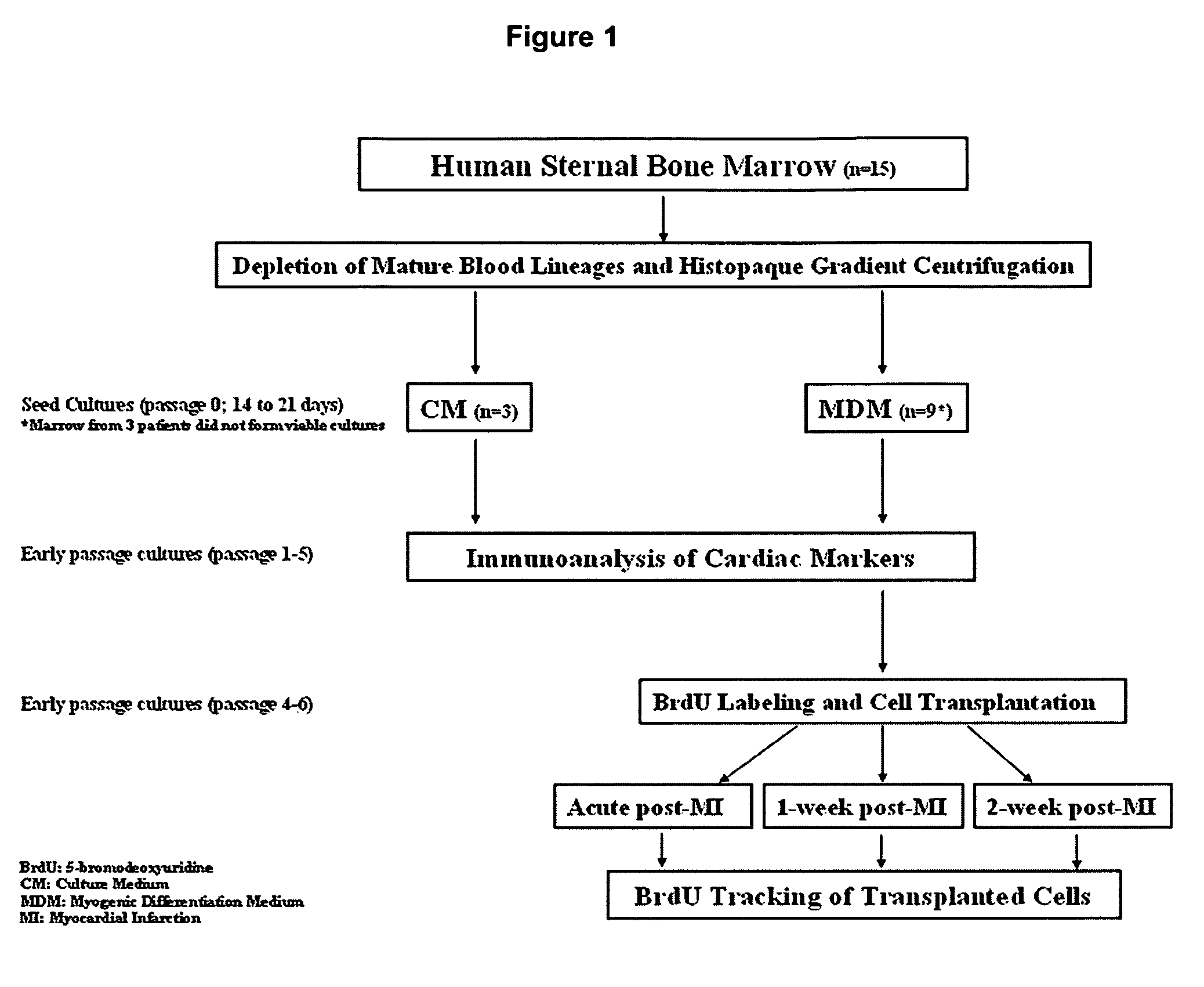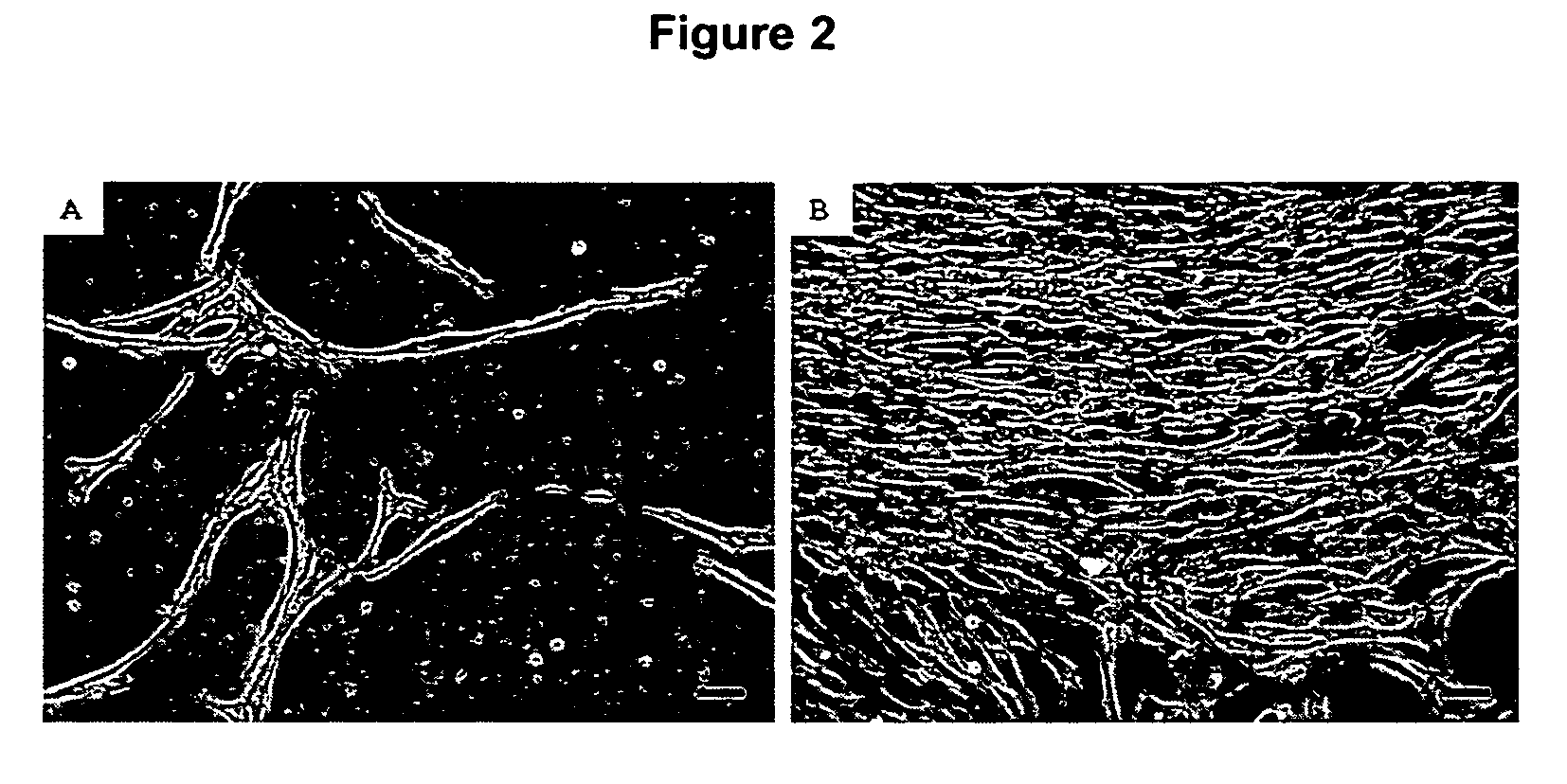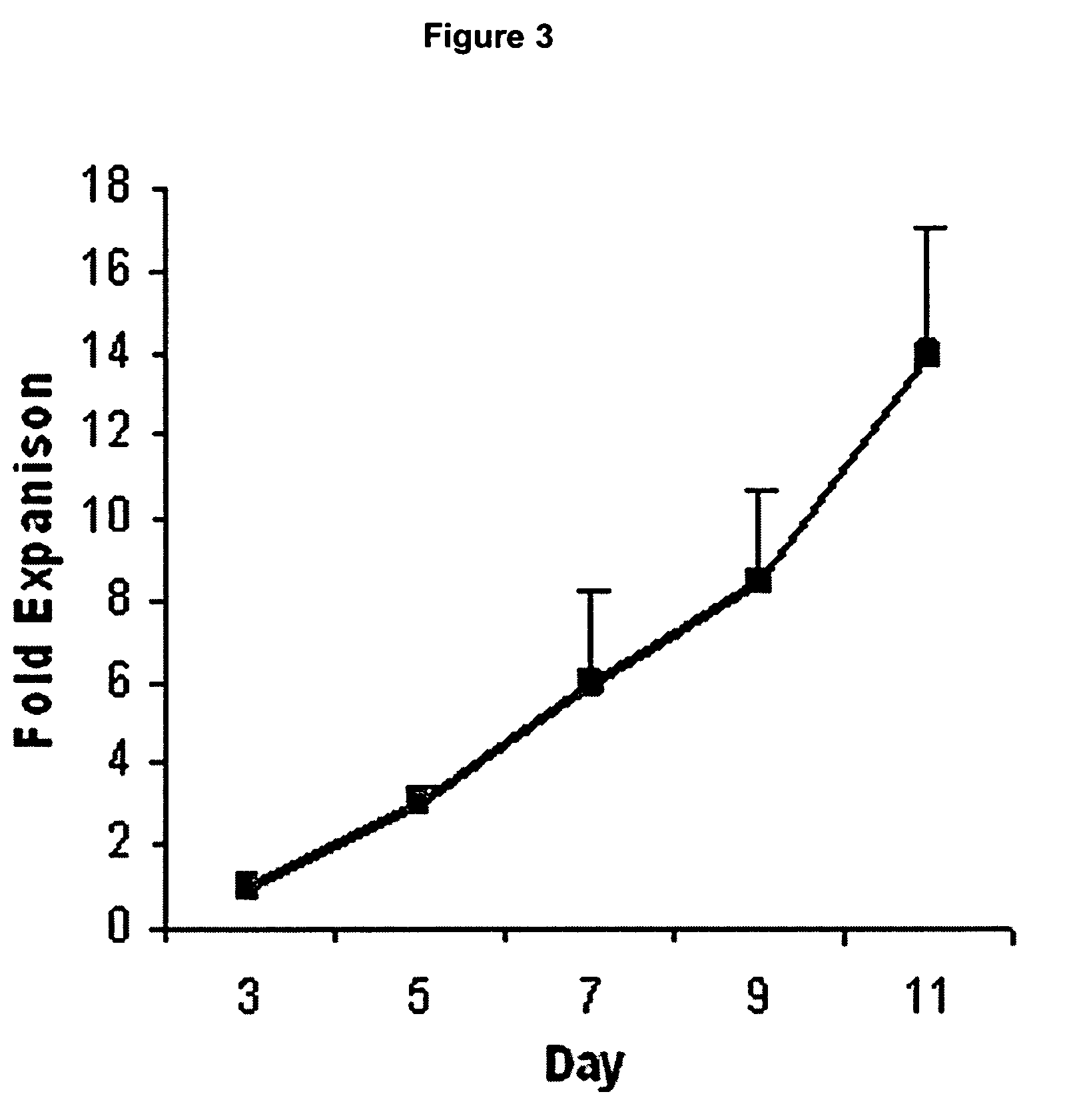Methods and compositions for culturing cardiomyocyte-like cells
a cardiomyocyte and composition technology, applied in the field of mammalian cell culturing methods, can solve the problem of engrafting cells not being immunologically rejected, and achieve the effect of enhancing the ability of clcs, optimal phenotypic qualities, and low efficacy
- Summary
- Abstract
- Description
- Claims
- Application Information
AI Technical Summary
Benefits of technology
Problems solved by technology
Method used
Image
Examples
example 1
Proliferation of Cardiomyocyte-Like Cells in Culture
[0073]Cells from a total of 12 patients were successfully expanded and used for subsequent analyses (FIG. 1). Marrow from 3 other patients failed to form viable cultures due to sparse starting cell numbers. Single cells of spindle morphology were observed 3 to 4 days after the initial seeding in culture. They rapidly expanded into colonies of confluent spindle cells with approximately 1 to 2 thousand cells in the next 7 days (FIG. 2A and B). Most of the loosely attached round hematopoietic cells were removed following medium change. Cultured cells were mainly of spindle morphology with an average doubling time of 48 to 72 hours (FIG. 3) but 5 to 10% of the colonies consisted of cells of polygonal morphology. After prolonged passages (>10 passages) in culture, the cells progressively lost their spindle morphology and the cultures were increasingly dominated by cells with polygonal morphology with an average doubling time of more tha...
example 2
Cardiomyocyte-Like Cells Are Negative for Endothelial Phenotypes
[0074]The MDM cultured cells showed positive staining for markers such as CD44, CD90, CD105 and CD106 (FIG. 4A to D) but were negative for CD45 and CD117 (Table 1). The cells showed about 30% positive staining for CD34 and FLK1 markers (FIGS. 4E and F) but were negative for Tie2, von Willebrand factor (vWF), CD31 and FLT1 endothelial markers (Table 1). These may represent residual hematopoietic cells from the initial cultures or they may be a subpopulation of bone marrow cells that expresses both mesenchymal and hematopoietic markers, since over 99% of the cells were stained positive for CD44, CD90 and CD105 mesenchymal markers.
example 3
Cardiomyocyte-Like Cells Exhibit Cardiac but not Skeletal Muscle Characteristics
[0075]Approximately 1% of the cells in the colonies were stained positive for cardiac troponin I 2 weeks after first seeding in MDM. After 4 to 5 passages, more than 90% of the cells were consistently stained positive for sarcomeric α-actin, sarcomeric α-actinin, desmin, skeletal / cardiac-specific titin, sarcomeric α-tropomyosin, cardiac troponin I, sarcomeric MHC, SERCA2 ATPase and connexin-43 (FIG. 5A to J). Expression of troponin I and SERCA2 ATPase was detected early (passage 1-2) followed by titin and desmin (passage 2-3) and then tropomyosin and actinin (passage 3-5) indicating differentiation towards CLCs. Approximately 60% of the CLCs also stained positive for cardiac-specific α / β MHC and cardiac transcription factor GATA-4 (FIGS. 5, K and L) suggesting a developing cardiomyocyte phenotype. There was weak immunoreactivity with slightly above background staining against ANP and cardiac troponin T a...
PUM
| Property | Measurement | Unit |
|---|---|---|
| density | aaaaa | aaaaa |
| thickness | aaaaa | aaaaa |
| doubling time | aaaaa | aaaaa |
Abstract
Description
Claims
Application Information
 Login to View More
Login to View More - R&D
- Intellectual Property
- Life Sciences
- Materials
- Tech Scout
- Unparalleled Data Quality
- Higher Quality Content
- 60% Fewer Hallucinations
Browse by: Latest US Patents, China's latest patents, Technical Efficacy Thesaurus, Application Domain, Technology Topic, Popular Technical Reports.
© 2025 PatSnap. All rights reserved.Legal|Privacy policy|Modern Slavery Act Transparency Statement|Sitemap|About US| Contact US: help@patsnap.com



